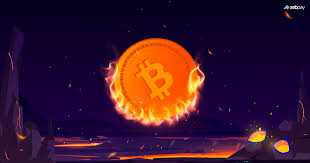In the fast-evolving world of cryptocurrency, where innovation often outpaces understanding, one concept has steadily gained traction among developers, investors, and token holders alike: Token Burn.
Used by leading blockchain projects and emerging tokens alike, token burning is a strategy with significant implications for supply control, inflation mitigation, and token value. But what exactly is token burn, how does it work, and why does it matter so much?
This article takes a deep dive into the mechanics and purpose of token burns—unpacking the concept with clarity for both new and seasoned crypto enthusiasts.
What Is a Token Burn?
A token burn refers to the permanent removal of a certain number of cryptocurrency tokens from circulation. This is typically done by sending tokens to an irretrievable address, known as a “burn wallet” or “eater address”—a public wallet with no known private key, making the tokens inaccessible forever.
Once burned, those tokens are effectively destroyed, reducing the overall supply of the cryptocurrency. This act is verifiable on-chain, meaning anyone can confirm the burn via blockchain explorers.
Why Do Projects Burn Tokens?
There are several key reasons why blockchain projects implement token burn mechanisms:
1. Scarcity and Value Appreciation
Just like traditional supply and demand economics, reducing the supply of a token—especially when demand remains constant or increases—can create upward pressure on the token’s price. Token burns are often used as a deflationary mechanism, similar to stock buybacks in traditional finance.
2. Inflation Control
Some cryptocurrencies are inflationary by design, continually minting new tokens as rewards (e.g., through staking or mining). In these cases, burns help offset inflation by removing a portion of supply to balance issuance.
3. Transaction Fee Models
Certain blockchains integrate automatic burns into their protocol. For example, Ethereum’s EIP-1559 introduced a base fee burn on each transaction, reducing ETH supply over time.
4. Rewarding Holders
Token burns are sometimes marketed as a way to benefit long-term holders by increasing the scarcity and thus the perceived value of the remaining tokens.
5. Correcting Oversupply
In cases where initial token distribution was too generous or misaligned with project growth, burning excess tokens helps restore economic balance.
Notable Examples of Token Burns
Several high-profile crypto projects use token burns as part of their economic model:
- Binance Coin (BNB): Binance conducts quarterly burns using 20% of its profits. Over time, they plan to reduce the total BNB supply from 200 million to 100 million.
- Ethereum (ETH): Since the London Hard Fork, a portion of every transaction fee is burned, gradually reducing the overall ETH supply—especially during periods of high network activity.
- Shiba Inu (SHIB): The SHIB community has undertaken multiple burn initiatives to reduce the meme token’s massive circulating supply.
- Ripple (XRP): A small amount of XRP is destroyed with each transaction, ensuring a slow, deflationary effect.
How Token Burn Impacts Price
While the logic behind token burning seems straightforward—less supply equals higher price—the real-world effect is more nuanced.
- Market Expectations: If a token burn is scheduled or anticipated, much of the potential price impact may already be priced in by the market.
- Demand Still Matters: Burned tokens do not automatically increase value unless there is continued or growing demand for the token.
- Transparency: Investors respond better to burns that are clearly communicated, verifiable on-chain, and backed by solid economic reasoning.
Moreover, large burns can sometimes create short-term hype and speculation. However, the most sustainable value comes from burns integrated into long-term protocol design, not as marketing stunts.

Are There Risks or Criticisms?
Yes. Although token burns are generally seen as a positive feature, there are some caveats and concerns:
- Misleading Marketing: Some projects overhype token burns as a shortcut to price growth without offering real utility or adoption.
- Lack of Utility: A burn may artificially reduce supply, but if the token has no actual use case or ecosystem, the price may not respond as hoped.
- Poorly Timed Burns: Burning too many tokens too soon may constrain liquidity or affect ecosystem incentives.
As with any crypto mechanism, thoughtful implementation matters more than flashy announcements.
The Future of Token Burns
Token burns are becoming increasingly sophisticated. Beyond manual and quarterly burns, smart contracts now allow for programmable, automatic burns tied to usage metrics. As DeFi and Web3 evolve, tokenomics is emerging as a central design feature—and token burns are one of its most effective tools.
We’re also seeing a shift from reactive burns (fixing oversupply) to proactive supply management (built-in deflation models). This change reflects a maturing market where long-term sustainability trumps short-term hype.
Final Thoughts
Token burn is more than a buzzword—it’s a fundamental component of modern crypto economics. When implemented wisely, it can help control inflation, reward holders, and support price stability. But like all things in crypto, its effectiveness depends on transparency, market trust, and utility.
Whether you’re an investor evaluating tokenomics or a developer designing a new protocol, understanding how token burns work—and when they matter—is essential for success in the blockchain ecosystem.








Leave A Reply